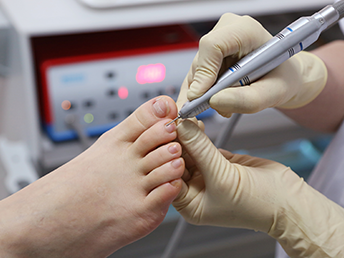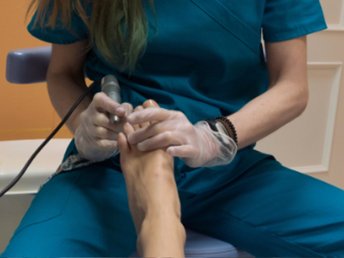Ingrown toenails can occur when the nail edge grows into the surrounding skin, causing pain, redness, and potential infection. Commonly affecting the big toe, they can result from improper nail trimming, tight footwear, an involuted nail shape or repetitive trauma.
At PodMed Podiatry, one of our experienced podiatrists will assess which treatment option may be best suited for you based on severity of symptoms:
Conservative Resection: A minimally invasive procedure where the ingrown portion of the nail is removed by a podiatrist using a topical anesthetic cream to de-sensitize the area. This technique is quick and effective for mild to moderate cases and allows for quick recovery.


Nail Bracing: A new and non-invasive method suitable for mild to moderate ingrown toenails caused by involution of the nail. A brace is applied to the base of the nail bed to gradually reposition it as it grows, reducing discomfort and promoting proper growth. This can be a great option for those looking to avoid surgical intervention or for someone with diabetes or peripheral vascular disease. It requires no local anaesthetic and no recovery period.
Partial Nail Avulsion (PNA): Involves surgically removing the problematic nail segment from the base of the nail bed then applying a chemical agent called phenol to the nail matrix to prevent regrowth. This approach is highly effective for more severe, recurrent cases when an ingrown toenail repeatedly becomes painful or infected, and other conservative treatments have proved unsuccessful. This procedure takes 45-60 minutes in clinic with one of our skilled podiatrists and patients can walk straight out afterwards. It typically requires 1-2 days of down time plus 1-2 weeks of aftercare.
Each of these treatment options can be tailored to your individual condition and needs. Consulting with one of our expert podiatrists can help determine the most appropriate approach for effective relief.